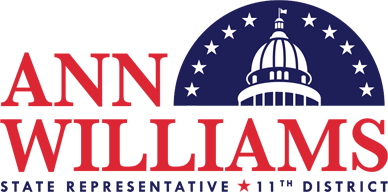Rep. Williams recently issued a newsletter statement on the passage of HB2908, which creates an elected school board for Chicago Public Schools:
“Finally, after years of public input, negotiation and debate we advanced the last step toward bringing an elected representative school board to Chicago. Finally, we gave a voice and a vote to every Chicagoan to shape the future of the Chicago Public Schools. Starting this fall, every Chicago voter can elect candidates for school board who reflect their values and priorities for the Chicago Public Schools. I was proud to support this historic bill, and appreciate the hard work, commitment and passion of all the countless advocates and community members who worked so hard on this issue over so many years. I look forward to working with all the school board candidates to make the Chicago Public Schools the best they can be for all Chicago’s students.”
Rep. Williams also provided a FAQ on the elected school board:
Didn’t we already pass the Chicago elected school board into law?
Yes. In July of 2021, after years of debate and negotiation, the elected school board bill was passed into law. It included a two-year phase-in period where the board will be made up of half elected and half appointed members starting in 2025 before transitioning to a fully elected board in 2027 in order to ensure adequate time for an orderly transition for what is a major change in governance. However, the original bill did not include a district map or the election process and procedures. The purpose of the bill which passed the House yesterday was to create the actual district map and implement the agreement as signed into law in 2021.
Was this bill written by the Chicago Teachers Union?
No. This bill is a product of the House Chicago Elected School Board Working Group, with significant input from an array of community members, advocates and organizations. The map itself is a compilation of ideas and input from members of the House and Senate as well as input gathered at numerous community meetings held over the past year. Over 20 maps were submitted, which were painstakingly reviewed and incorporated into the final version of the map.
How the elections will actually work was sketched out on a piece of notebook paper by our working group members as we brainstormed to figure out the best way to get to a fully elected board while providing for a smooth transition as laid out in the 2021 law. I’m proud of the work we did; while not perfect, it is workable, fair, equitable and responsible and will give a voice and vote to every Chicagoan right out of the gate.
Why aren’t we going to a fully elected board right away?
Like many others, I was a vocal supporter of a fully elected board for many years and in fact, I voted for the proposal multiple times. If this conversation were happening a year ago, I would still be pushing for a fully elected board. But as someone whose district lies fully in Chicago, it feels irresponsible to reopen the original agreement and require a complete revamp of the governance of the Chicago Public Schools in a matter of months without adequate time to plan for this historic transition. The bill will begin the process of removing the governance from the City only 10 months from now and will be fully divested in 2027.
What if I don’t agree with the current mayor’s education policies?
First, this is not about any one mayor. It was discussed and voted on (several times) during the Emanuel administration, was passed under the Lightfoot administration and will be implemented during the Johnson administration. However, the Illinois General Assembly will continue to oversee the education of Illinois and Chicago students, and create policies in line with the priorities of our constituents – whether it be about selective enrollment or magnet schools, school resource officers, the role of LSCs or curriculum.
Additionally, you will now be able to support and vote for a school board candidate who reflects your values and priorities for the Chicago Public Schools, starting this November!
How were the school board signature requirements determined?
The signature requirements, i.e. the number of registered voter signatures required in order to run for a seat on the school board, will start at 1000 signatures for the 2024 election and 500 signatures for the 2026 election. These numbers are aligned with the number of signatures required to run for the Illinois Senate and House, respectively. We based these numbers on the size of the districts; the 10 seats initially up for election in 2024 are approximately the size of a Senate district, and both require 1000 signatures. The 20 seats up for election in 2026 are about the size of a House seat, and both require 500 signatures.
To read the full newsletter and FAQ, click here.

